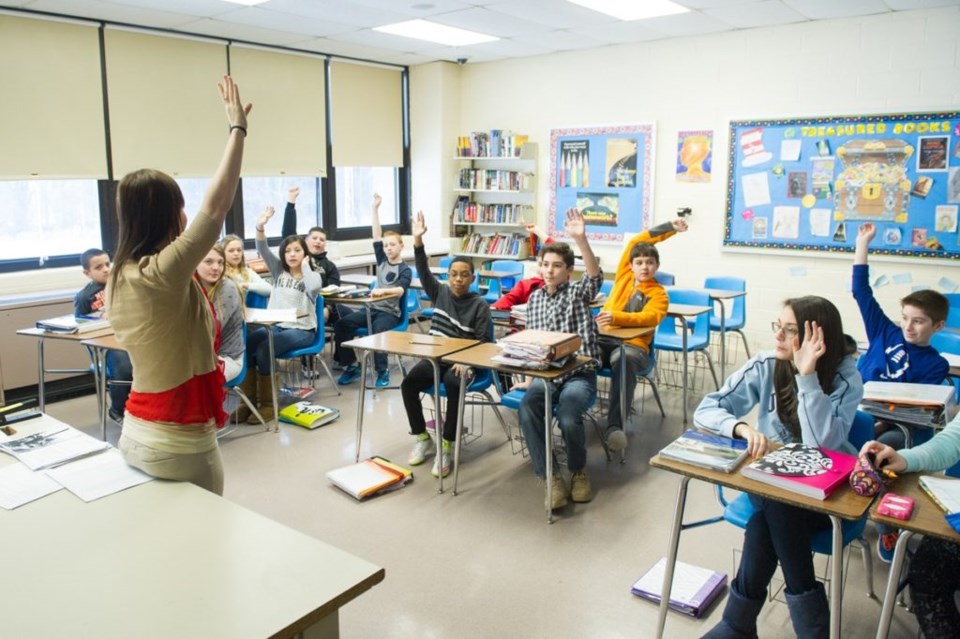Educators, facing a class of 20 to 30 students each day for 180 or so days each year, confront a major problem: How do people learn?
The answer, startling in its simplicity, is “we don’t really know.”
There are a range of procedures, tests, assessments and theories of various kinds, which indicate that learning might have occurred. However, in the same way that other professions observe outcomes in the absence of a complete understanding of the what and why that underlie the outcome, educators forge ahead in the hope that they are doing some good.
We know, or think we know, that learning in the broadest meaning of the word begins from the moment we are born, when we begin to learn about the world around us. This, theoretically at least, continues for the rest of our lives. But exactly how does this happen in the brain?
Brain researchers tell us that the hippocampus is vital for converting short-term memories into long-term memories which are then stored in the cortex (the surface layer of the brain).
But how and where in the cortex memories are stored is unclear.
We know, or think we know, that from their earliest days, play is important for children to learn about the physical and social world around them.
What about less-physical play, video games for example?
Recent studies provide conflicting results. One study in Oxford showed that up to an hour of gaming a day actually had some benefits for a child, and it is only when video playtime exceeds three hours that any negatives, such as social withdrawal into a fantasy world, are observed.
Play can help animals learn to survive in a variety of different environments. The more sophisticated the play, that of apes and dolphins for example, the more sophisticated the animal — or so we assume.
Yet one of the simplest animals to show learning is slime mould, amazing creatures containing multiple nuclei inside one cell like an amoeba. As they grow, these minute “animals” spread out in all directions to “learn” where food is.
As we humans grow, the acquisition of knowledge beyond learning to find food, if that is what learning is, occurs at an exponential rate, according to scholars such as Benjamin Bloom.
Bloom’s construct for learning is probably the best known among people ranging from classroom teachers to NFL and CFL football coaches.
Bloom hypothesized that, at its most simplistic levels, acquiring “knowledge” involves recognizing or remembering facts, terms, basic concepts and answers without necessarily understanding what they mean.
Moving up Bloom’s hierarchy of learning “comprehension” involves demonstrating an understanding of those facts and ideas, followed by “application,” which involves using thus-far-acquired knowledge. This involves solving problems in new situations by applying previously acquired knowledge, facts, techniques and rules.
If that is where learning ends, and sadly it does for some adults, even some who hold elected office, the most significant aspects of Bloom’s hierarchy would have been lost because more complex learning involves “analysis” — the breaking information into component parts, and finding evidence to support generalizations.
Then learning gets really interesting as the learner develops the ability to put together or synthesize parts of existing knowledge acquired so far to develop new knowledge.
Finally, and this is where political debate often falls dismally short, is the intellectual ability to evaluate or make judgments about information and ideas based on evidence.
Post-Bloom learning theorists have added yet another layer of learning that they describe as “creating,” which involves generating new hypotheses about a problem and then planning solutions and likely outcomes.
That’s where NFL and CFL coaches have found the greatest successes with a quarterback who has learned the playbook all the way up through knowledge, comprehension, analysis, synthesis and evaluation of an on-the-field situation, but is then able to create a play not envisaged by the limitations of the playbook.
The final goal, the holy grail of learning, then emerges as “critical thinking.” That does not mean criticizing everything and everybody in sight. Quite the contrary.
Critical thinking is the intellectually disciplined process of employing all of the intellectual skills which construct what we know as learning and then beyond that, by means of observation, experience, reasoning and communication forming a reliable guide to belief and, subsequently, action.
It is that ability we should demand of those who would seek to lead us, whether they be educators leading a classroom or politicians leading a nation.
As Henry Kissinger explained: “The task of the leader is to get their people from where they are to where they have not been.”
To be able to do that would involve evidence of learning and subsequently thinking at its highest levels.
Geoff Johnson is a former superintendent of schools.



